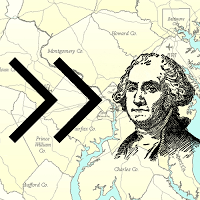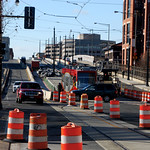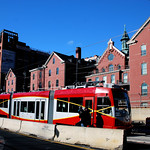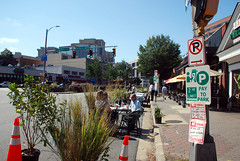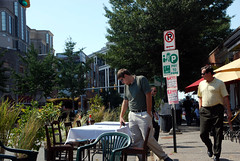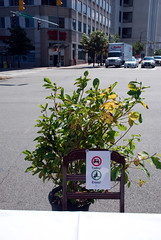|
Special Features





Image Libraries


|
|
Blog
To rehab part of the Red Line, Metro will close it for 14 weekends
|
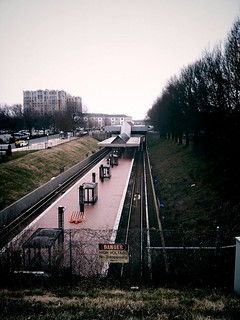
Grosvenor Metro station. Photo by Isaac Wedin on Flickr. |
Get ready for major construction along the Metrorail Red Line. Starting in the summer of 2016, WMATA will close portions of the Red Line between Friendship Heights and Grosvenor for 14 weekends, including one stretch of at least 7 consecutive weekends.
The good news is that in exchange for all those closures, Metro will complete a whole cadre of major rehabilitation projects up and down the line, and begin construction on the Purple Line. Instead of the piecemeal reconstruction that’s characterized Metro rebuilding elsewhere, this will be a comprehensive program that will solve several problems at once.
Metro will fix water leaks in the subway tunnel, repair the piers that hold up the elevated tracks near Grosvenor, rebuild the platform at Grosvenor, and begin construction on a new mezzanine at Bethesda station, for transfers to the Purple Line.
The most significant construction will happen just outside Medical Center station, where Metro workers will install a large arch between the tracks and ceiling, to help waterproof the tunnel.

Medical Center arch. Image from WMATA.
The work is necessary because water leaks in the subway tunnels have been causing electrical failures. In addition to waterproofing the area around Medical Center station, workers will power wash the tunnel, fix leaks in the tunnel, install better drain pipes, and replace tunnel lights and electrical cables.
Since the water leaks are an immediate problem that will take several weekends to fix, WMATA will take advantage of the station closures to do other work as well.
Workers will rehabilitate the elevated tracks near Grosvenor, where the metal bolts holding up the aerial structure have begun to degrade. Although the structure is not in any immediate danger of falling down, it could become a threat if Metro doesn’t fix the situation now.
At Grosvenor station itself, workers will replace the crumbling original platform tiles with the newer Takoma-style tiles the agency has been using in recent years.
Finally, Metro will begin construction on its portion of the Purple Line, at the Metro stations that will double as Purple Line transfer points. At Bethesda, workers will begin to install a second entrance and mezzanine. At Silver Spring, workers will begin to plan a similar connection, although construction won’t begin yet during this period.

Bethesda second mezzanine. Image from WMATA.
There’s no doubt all this construction will be painful for riders, but it’s better than the alternate. At one point, Metro management was considering completely closing this part of the Red Line 24×7 for at least five weeks. By closing only the weekends, at least the line will remain useful for commuters.
Correction: The initial version of this post implied that a new arch would go inside Medical Center station. It is actually in the tunnel just outside the station.

 Cross-posted at Greater Greater Washington. Cross-posted at Greater Greater Washington.
October 6th, 2014 | Permalink
Tags: events, metrorail, transportation

Silver Line opening day, in 41 photosMetro’s new Silver Line is officially open and carrying passengers. Enjoy this photo tour of the new line and opening day festivities.
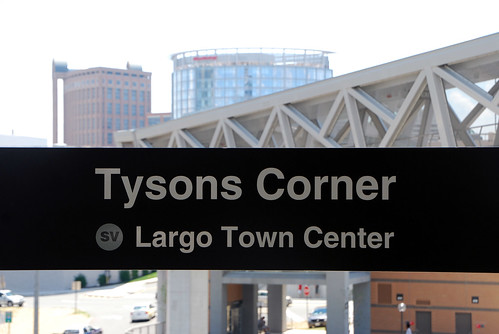
> Continue reading at Greater Greater Washington
July 28th, 2014 | Permalink
Tags: architecture, development, events, galleries, metrorail, transportation

It’s a huge weekend for US transit openingsMid summer is prime time for big transit openings, and this weekend is a doozy. Three big projects around the US are opening today or tomorrow.
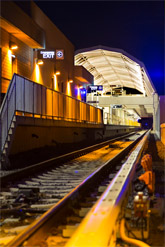
Silver Line. Photo by Fairfax County. |

Denver Union Station. Photo by Ryan Dravitz for DenverInfill.com. |
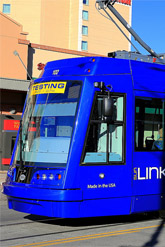
Tucson streetcar. Photo by Bill Morrow on Flickr. |
By now, probably everyone in the DC region knows the Silver Line opens tomorrow, Saturday the 26th.
The same day, Denver’s gloriously updated Union Station opens its final component, the renovated historic main hall. Other portions of Denver’s Union Station opened in May.
But Tucson beats both DC and Denver by one day. Their Sun Link streetcar opens today, at 9:00 am Mountain Time (11:00 am Eastern Time). Sun Link uses the same streetcar vehicles as DC’s H Street line, built by the same company, as part of the same production run.
Speaking of the H Street streetcar, although it’s not opening this weekend, it is nonetheless making visible progress. The final streetcar vehicle has finally arrived in DC from the factory. Four streetcars are now on H Street for testing, plying the route on their own power. And pylon signs are starting to appear at streetcar stations.
All these projects have been a long, difficult road. It’s great to see them starting to pay off.
July 25th, 2014 | Permalink
Tags: events, intercity, metrorail, streetcar, transportation

DC buses should be better; let’s talk about how
|
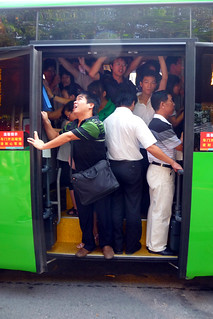
Overcrowded bus.
Photo by dcmaster on flickr. |
More and more people are riding the bus in DC. That’s great, but it’s also straining the system to its limits. Experts from DDOT and WMATA will discuss how to make buses work better for more people at a free panel on Wednesday evening.
Buses come every couple of minutes on WMATA’s busy 16th Street line. But it’s not enough. Rush hour passengers often watch bus after bus pass by, too jam packed to allow even one more person on board. Other lines face similar problems, or soon will.
What can we do? Simply adding more buses may not work, because there are so many buses already on 16th Street that they bunch together, forming long pseudo-trains where multiple buses all come at the same time. Even if the last bus is empty, bunching like that slows down the entire line for everyone; waiting passengers wait longer, and moving buses move slower.
Meanwhile, WMATA’s central DC bus storage barn doesn’t have any extra room for new or bigger buses, so even adding more articulated buses would be difficult, expensive, and take years of planning.
Streetcars could increase capacity, but they’d take even longer to implement. And they work better for shorter trips on commercial streets anyway, as opposed to the longer commute trips common on 16th Street.
Bus lanes are a possibility, but repurposing car lanes for transit takes a lot of political courage. So far leaders in DC haven’t been willing to take that leap.
What’s left? What can we do? Or can longer buses or bus lanes actually work?
Come to 1701 16th Street NW on Wednesday from 6:00 – 8:00 pm to hear experts weigh in. Panelists include DC Councilmember Mary Cheh, WMATA’s head bus planner Jim Hamre, DDOT transit planner Sam Zimbabwe, and former New York City Director of Transit Planning Joseph Barr.
RSVP with the Coalition for Smarter Growth.
April 29th, 2014 | Permalink
Tags: bus, events, transportation

Donate to GGW to keep it strong & limit ads
Donation link
Greater Greater Washington wasn’t the first blog about urbanism or local policy-making in Washington, DC, but it’s the one that changed the discussion. It’s the one that brought arcane subjects like zoning and transit planning into the city’s mainstream.
By the time I first discovered Greater Greater Washington, I’d already been writing BeyondDC for many years. I was one of a cadre of bloggers writing about development and transportation, along with people like Richard Layman, and DCist’s Ryan Avent,.
But we were few and far between, and most of us either had other jobs or split our writing with other subject matters. DC’s online urbanist community, such as it was, had no home base and no leader. We were a niche network of geeky wonks, great at expressing opinions but not so good at building broad support.
Greater Greater Washington changed all that.
When David Alpert showed up, with his mountain of energy and dedication, that was a game-changer. David had the skills and time to do what the rest of us couldn’t. He went to public meetings, he drew maps, and he wrote, and wrote, and wrote. All of it was accessible to anybody. All of it was interesting, and exciting. All of it elevated the public discussion about what Washington could be.
And the readers poured in. Then some of the early readers started writing too, and the whole thing grew exponentially.
At first, I admit, I was a little jealous.
But it took me about 3 seconds to realize what was happening. A mere blog was becoming a community, and that was too wonderful a thing to pass up. I had to be part of that.
And become a community Greater Greater Washington did. With more writers and more readers, we started to have an impact. Not only on other policy wonks, not only on the editorial pages of other media, but on the tone of the discussion itself, and later on elected officials.
Now, everyone in town knows the practicality and benefits of car-free or car-light living. We can swing budgets, and change construction plans,.
Thanks to Greater Greater Washington, urbanists in the DC region are a political force. We’ve gone mainstream, and we’re making a difference.
Please help us keep making a difference. Please donate what you can to GGW, so our community will still have the strong voice it needs.
 Cross-posted at Greater Greater Washington. Cross-posted at Greater Greater Washington.
March 5th, 2014 | Permalink
Tags: events, site

Last minute gift ideas for urbanistsIf you’re a responsible adult, you’ve already finished all your holiday shopping. If you’re like me, you’ve still got some to do. So here are some gift ideas for the urbanists in your life, all from brick-and-mortar stores in DC that you can visit today or tomorrow.

Fare card trivet, the Bible of urbanism, DC earrings, and SimCity computer game.
Get a book
You can’t go wrong with books, and most large bookstores have a shelf or two dedicated to architecture & city planning. The four urbanist books I always recommend are:
The Death and Life of Great American Cities by Jane Jacobs. It’s the Bible of urbanism, the seminal book on what makes a good city, and the singular most essential book in any urbanist library.
The Geography of Nowhere by James Howard Kunstler. By far the most accessible description of how suburbia happened, why it seemed to make sense at the time, and why it ultimately proved a disaster.
Suburban Nation by Andres Duany, Elizabeth Plater-Zyberk, and Jeff Speck. Like Death and Life, but more contemporary, and beautifully illustrated with simple maps & diagrams that help make the point.
Walkable City by Jeff Speck. Speck is a DC resident, a GGW contributor, and one of the best urbanist writers today. He collaborated on Suburban Nation, and then with Walkable City presented the hard data that backs up his claims.
Go to the National Building Museum gift shop
The National Building Museum focuses on cities and architecture, and has great gift shop. It’s open until 5pm Monday and Tuesday. They have DC street map earrings, Metro fare card trivets, city map ties, foldable paper Metrorail train cars, and all sorts of other cool stuff.
Get SimCity
If the urbanist you love is under 40, odds are he or she has played and loved the SimCity family of computer games. You can buy the latest version at any electronics or video games store.
 Cross-posted at Greater Greater Washington. Cross-posted at Greater Greater Washington.
December 23rd, 2013 | Permalink
Tags: events, in general

Streetcar arrives on H Street
On Friday night, DDOT crews moved the first streetcar to H Street.
The last time streetcars ran on DC streets was January, 1962, just shy of 52 years ago. But don’t expect to catch a ride just yet. The streetcars must now undergo a series of on-street tests before passenger service can begin sometime in 2014.
Many city residents stopped by over the weekend to snap their own pictures. If you haven’t had a chance yet, it’s right there. You can go anytime.
 Cross-posted at Greater Greater Washington. Cross-posted at Greater Greater Washington.
December 16th, 2013 | Permalink
Tags: events, streetcar, transportation

Don’t expect a panaceaThe Beltway HOT lanes are officially open and in action. I went out yesterday afternoon to take a quick look, although I still haven’t driven on them.
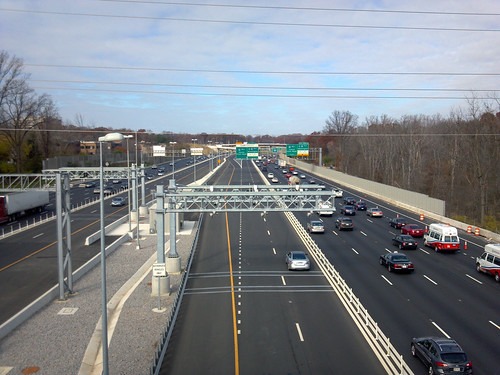
I-495 HOT lanes, at Lee Highway.
In this picture you’re looking north along I-495 from the US-29 overpass, in Merrifield. The metallic contraption hanging over the highway in the center of the image is the toll gantry, which reads EZpass signals from passing cars below. You must have an EZpass to use the lanes.
There is exactly 1 car visible using the HOT lanes in either direction, although the picture wasn’t taken during rush hour.
It will be especially interesting to see if these new express lanes help a transit culture develop in Tysons Corner. Tysons has more office space than downtown Baltimore, so there’s plenty of potential market. Buses will use the lanes on routes coming from Fairfax, Loudoun, and Prince William counties, and will undoubtedly have a better trip than they would in the general purpose lanes. But with a private company that hopes to maximize toll revenue in charge of the lanes, one wonders how well buses will be treated.
One thing is totally clear: There will still be traffic jams on the Beltway. HOT lanes will allow some drivers and transit users to bypass congestion, but if there aren’t traffic jams then no one would pay to use the HOT lanes, so the road’s owners wouldn’t make any money. The concept requires continued congestion in the general purpose lanes in order to work.
These things give people more options, so that’s good, but they won’t end congestion on the Beltway.
November 20th, 2012 | Permalink
Tags: bus, events, roads/cars, transportation

My favorite street space from Park(ing) DayMy favorite street space from Park(ing) Day comes from Dallas, which took the event very seriously. Chairs and little patches of grass are nice, but I love the creative thinking that resulted in a book exchange:
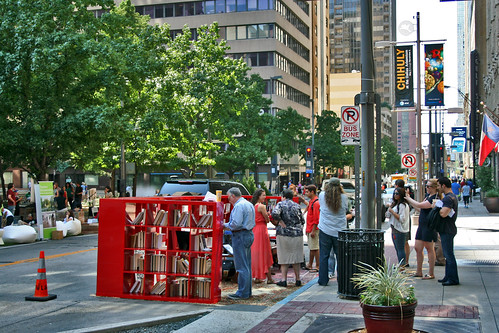
Photo by C Troy Mathis on flickr.
September 28th, 2012 | Permalink
Tags: events, fun, urbandesign

For Park(ing) Day, Arlington creates a block of cafe seatingFor Park(ing) Day today, Arlington converted a block of Wilson Blvd parking spaces into a row of outdoor cafe seating. The setup will be in place this evening until around dusk.
Here are some pictures:
September 21st, 2012 | Permalink
Tags: events, galleries, roads/cars, transportation, urbandesign

|
Media





Site
About BeyondDC
Archive 2003-06
Contact
Category Tags:
Partners
|




 Cross-posted at Greater Greater Washington.
Cross-posted at Greater Greater Washington.














